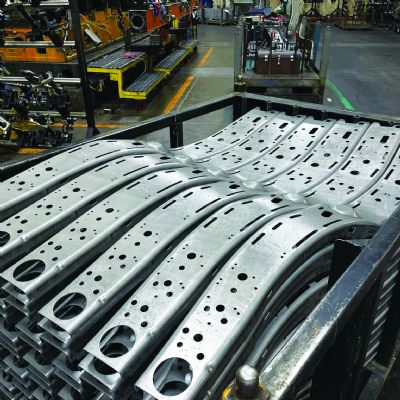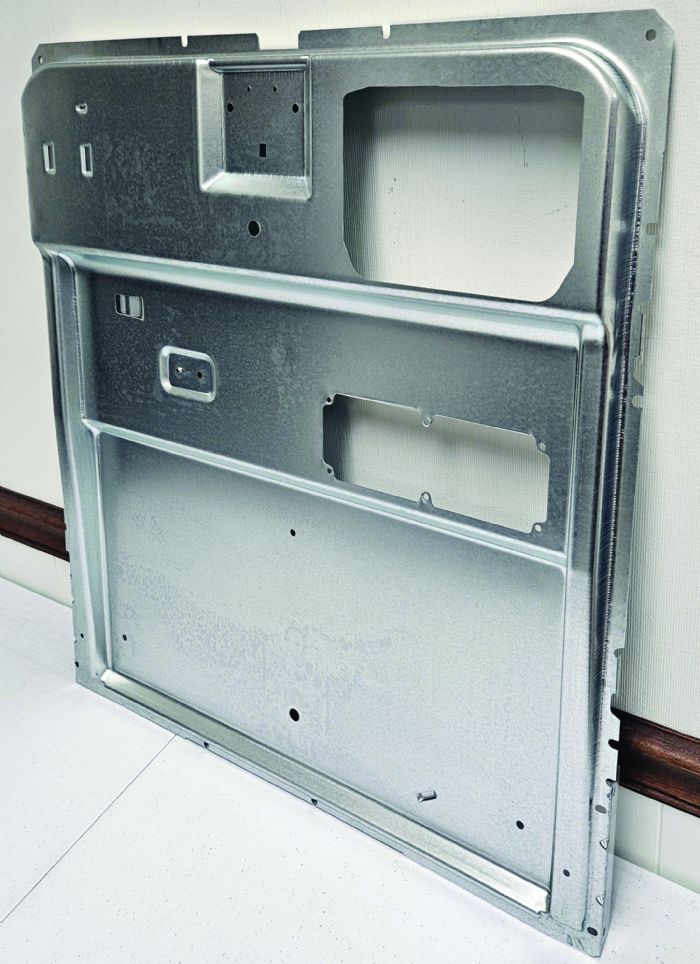 The part in question is a dishwasher inner door assembly, stamped on one of Pennant’s largest presses—a 600-ton mechanical. The tool produces weekly volumes of 25,000 to 30,000, and requires a deep draw (2 to 3 in.) performed in two of the die’s six stations. The material of choice: 0.036-in. galvanized steel, with a tapered 2-in. downward draw. And, while the stamping process calls for a production rate of 600 strokes/hr., quality issues sometimes slowed things down to half that rate.
The part in question is a dishwasher inner door assembly, stamped on one of Pennant’s largest presses—a 600-ton mechanical. The tool produces weekly volumes of 25,000 to 30,000, and requires a deep draw (2 to 3 in.) performed in two of the die’s six stations. The material of choice: 0.036-in. galvanized steel, with a tapered 2-in. downward draw. And, while the stamping process calls for a production rate of 600 strokes/hr., quality issues sometimes slowed things down to half that rate.
“We struggled with cracking and galling,” Figgins shares, “and when we over-applied the straight, soluble-oil lubricant to try to avoid cracking, the customer often would spend a lot of time wiping excess lube from the parts prior to assembly. That led to frequent rejects from the customer and thousands of dollars spent for sorting.”
A Host of Issues
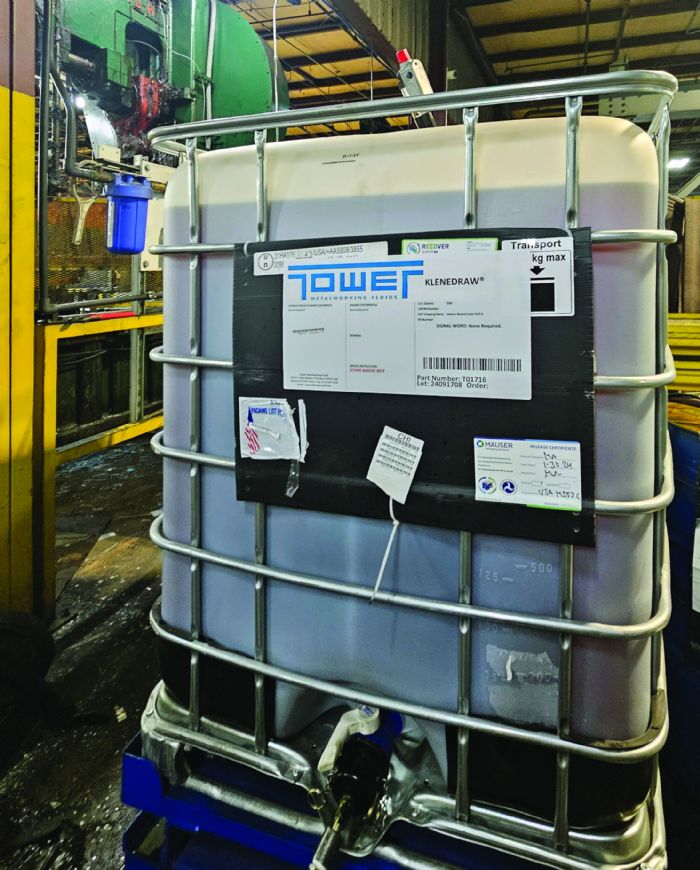 While the lubrication project headed up by Figgins and operations manager Charley Harpen focused on that initial tool and part, they believed that by conducting a well-planned project to investigate and eventually select a new lubricant to replace the heavy oil, that it also would be able to use the new lubricant to replace other formulations being used at the facility—on its presses and on its roll forming mills.
While the lubrication project headed up by Figgins and operations manager Charley Harpen focused on that initial tool and part, they believed that by conducting a well-planned project to investigate and eventually select a new lubricant to replace the heavy oil, that it also would be able to use the new lubricant to replace other formulations being used at the facility—on its presses and on its roll forming mills.
“We also sought a solution that would mitigate other issues caused by using—and in some cases overapplying—the oil,” shares Harpen. “Those being oil mist in the air, and excess lube dripping and pooling on the floor.
“We started the project by first replacing spray-nozzle application with a roll coater,” he continues, “to help ensure the lubricant is applied where it’s needed, on the top and bottom of the stock.
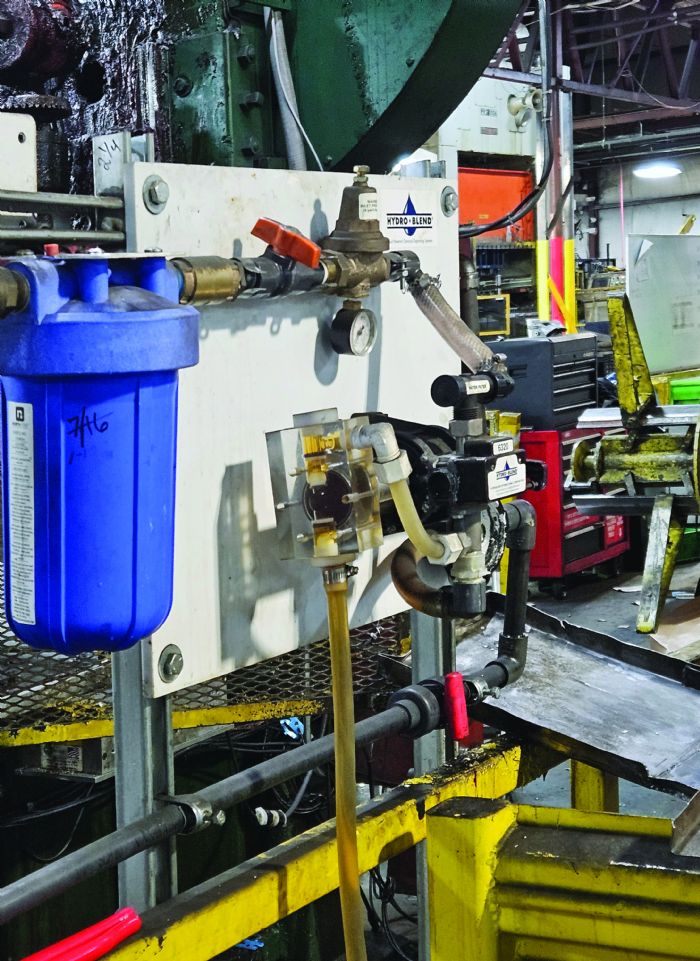 “We realized some improvement moving from spray application to a roll coater,” adds Harpen, “but still struggled as the rollers would become gummed up, especially if the press sat idle for any length of time. And, we struggled with the consistency of the lubricant concentration ratio. We still had far too many customer rejects, as well as press downtime and then, expedited shipping.”
“We realized some improvement moving from spray application to a roll coater,” adds Harpen, “but still struggled as the rollers would become gummed up, especially if the press sat idle for any length of time. And, we struggled with the consistency of the lubricant concentration ratio. We still had far too many customer rejects, as well as press downtime and then, expedited shipping.”
The Tide Turned
… later in 2023 when, following extensive testing with the Tower Metalworking Fluids (TWF) team, led by field engineer Colin Slaboden, Pennant switched over to a next-generation hazard-free synthetic lubricant. The process change has been a major success, and the new solution has a lower per-gallon price tag than the straight oil it replaced.
“We tested hundreds of parts, run on the 600-ton press using a variety of lubricants, first with small 5-gal. pails and then moving to longer runs with 55-gal. drums and then 330-gal. totes, Harpen explains. “As a result of the project, we’ve been able to reduce the concentration of the lube delivered to the press from 15 to 17% down to 8 to 10%. And the press, when running the appliance deep-draw tool, has gone from consuming 55 to 80 gal. of oil/week to just 10.5 gal. of Klenedraw/week.”
In addition, lubricant coverage is consistent and precise, Figgins and Harpen report, on the sheet top and bottom, alleviating any concerns with cracking or residue. Running its presses three shifts/day, that adds up to significant cost savings.
“Bottom line,” says Figgins: “Customer rejects and associated sorting costs have disappeared, and we no longer have to expedite packaging and shipping to meet delivery dates. In addition, press overall equipment effectiveness has risen considerably, by 8 to 10% I’d estimate, as we’re no longer shutting down to evaluate, diagnose and address quality issues. We’re back to running the tool at the prescribed 600 parts/hr.”
The plant also has switched over to Klenedraw for its hand-fed presses, wiping the formulation onto every third or fourth blank to keep the tooling lubricated and prevent the tools from scaring the blanks’ film coating. And, when it comes to consistency of the lube dilution, the project also included the addition of a central mixing station, plumbed not only to the 600-ton press stamping the dishwasher door panels, but also to four additional presses.
Coming soon: a second mixing station that will deliver the same Klenedraw formulation, albeit with different concentrations, to the roll forming mills. That project, slated for completion in 2025, will significantly consolidate the number of lubricants at the Pennant facility—down from 10 to just three, Figgins says, to address its catalog of base materials including coated and uncoated steels, stainless steels and aluminum grades.
“All of that reduces the number of variables for our operators out on the floor,” says Harpen, “in terms of ensuring that they use the specified lubricant type and concentration for a given job.”
It also makes life a little easier for the plant’s director of purchasing, Kathy Rupp. She adds:
“The depth of knowledge we gain by working with Tower,” summarizes Rupp (who earned recognition in 2024 as part of MetalForming magazine’s Women of Excellence in Metal Forming and Fabricating program), “has been critical to the outcome of this project. It’s quite an accomplishment, which not only improves our operations but also the operations of our customers.”
What’s on the continuous-improvement agenda for 2025? Beyond adding another central lubricant mixing system and plumbing it to the roll forming mills, the facility will continue to invest in automation. That commitment already is evident along its roll forming lines, where cobots manage end-of-line part packaging.
“That’s been yet one more benefit of the new lubricant,” adds Figgins. “The cobots’ end-of-arm magnetic tooling could be impacted by over-application of the oil-based lube. With the new synthetic, that concern disappears.” MF
See also: Tower Metalworking Fluids
Technologies: Lubrication
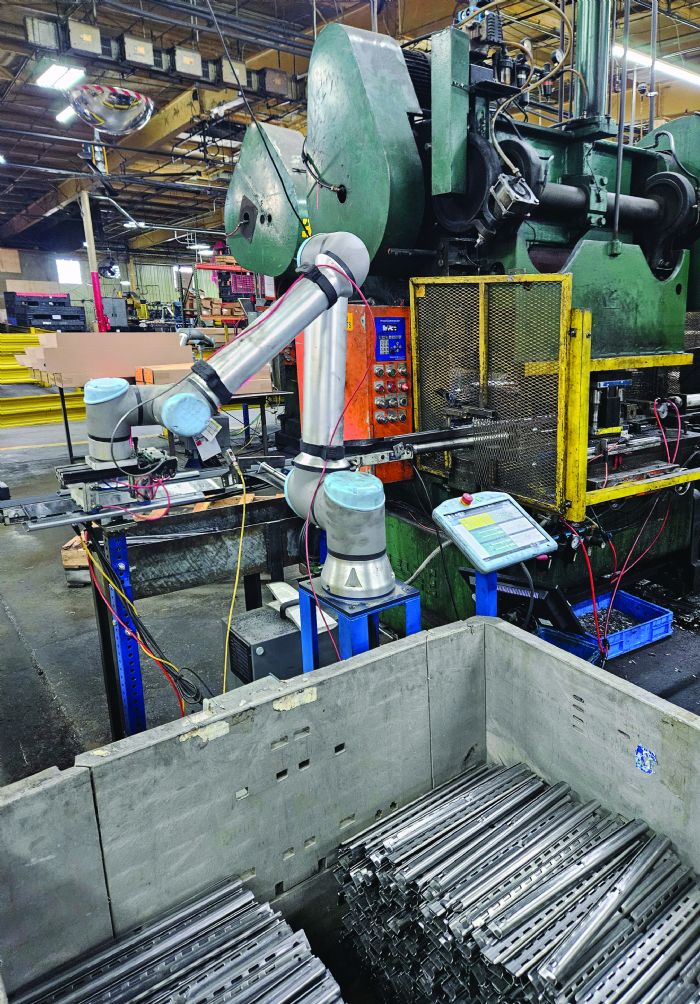 All of these goals recently were achieved by Tier One appliance-industry supplier Pennant, Inc., at its Sabina, OH, facility, one of four locations operated by the supplier of roll formed and stamped products and welded assemblies. While the appliance market dominates its customer base, the firm also supplies ConAg, consumer, heavy-truck, industrial lawn and garden and utilities industries.
All of these goals recently were achieved by Tier One appliance-industry supplier Pennant, Inc., at its Sabina, OH, facility, one of four locations operated by the supplier of roll formed and stamped products and welded assemblies. While the appliance market dominates its customer base, the firm also supplies ConAg, consumer, heavy-truck, industrial lawn and garden and utilities industries.






 The part in question is a dishwasher inner door assembly, stamped on one of Pennant’s largest presses—a 600-ton mechanical. The tool produces weekly volumes of 25,000 to 30,000, and requires a deep draw (2 to 3 in.) performed in two of the die’s six stations. The material of choice: 0.036-in. galvanized steel, with a tapered 2-in. downward draw. And, while the stamping process calls for a production rate of 600 strokes/hr., quality issues sometimes slowed things down to half that rate.
The part in question is a dishwasher inner door assembly, stamped on one of Pennant’s largest presses—a 600-ton mechanical. The tool produces weekly volumes of 25,000 to 30,000, and requires a deep draw (2 to 3 in.) performed in two of the die’s six stations. The material of choice: 0.036-in. galvanized steel, with a tapered 2-in. downward draw. And, while the stamping process calls for a production rate of 600 strokes/hr., quality issues sometimes slowed things down to half that rate. While the lubrication project headed up by Figgins and operations manager Charley Harpen focused on that initial tool and part, they believed that by conducting a well-planned project to investigate and eventually select a new lubricant to replace the heavy oil, that it also would be able to use the new lubricant to replace other formulations being used at the facility—on its presses and on its roll forming mills.
While the lubrication project headed up by Figgins and operations manager Charley Harpen focused on that initial tool and part, they believed that by conducting a well-planned project to investigate and eventually select a new lubricant to replace the heavy oil, that it also would be able to use the new lubricant to replace other formulations being used at the facility—on its presses and on its roll forming mills.  “We realized some improvement moving from spray application to a roll coater,” adds Harpen, “but still struggled as the rollers would become gummed up, especially if the press sat idle for any length of time. And, we struggled with the consistency of the lubricant concentration ratio. We still had far too many customer rejects, as well as press downtime and then, expedited shipping.”
“We realized some improvement moving from spray application to a roll coater,” adds Harpen, “but still struggled as the rollers would become gummed up, especially if the press sat idle for any length of time. And, we struggled with the consistency of the lubricant concentration ratio. We still had far too many customer rejects, as well as press downtime and then, expedited shipping.”
